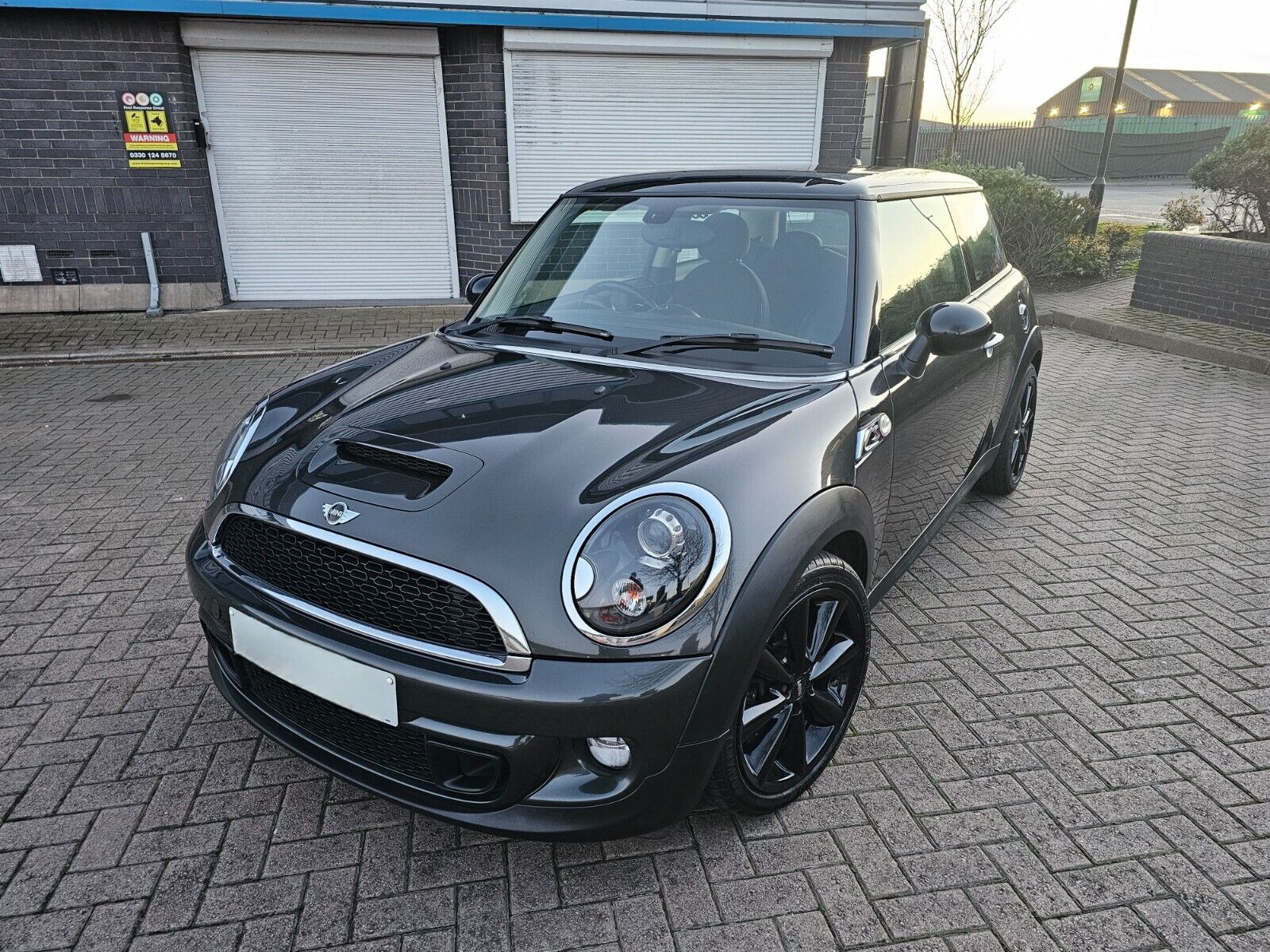

MINI Cooper R56 S buyer checklist
When you approach the MINI Cooper R56 you’re about to buy, your eyes should immediately scan for any signs of rust or corrosion. This is particularly important as these issues can indicate deeper problems that may not be immediately visible. Look closely at the wheel arches, under the doors, and around the boot lid, as these areas are often prone to rust due to moisture accumulation.
If you spot any bubbling paint or flaking, it could be a sign that the metal underneath is compromised. A thorough inspection can save you from future headaches and costly repairs. Next, take a moment to assess the bodywork for any dents, scratches, or other damage.
Even minor imperfections can affect the car’s resale value and may indicate how well the previous owner cared for the vehicle. Run your fingers along the edges of the panels to feel for any irregularities. Additionally, check that all lights and indicators are functioning properly.
A quick test of the headlights, brake lights, and turn signals will ensure that you are safe on the road and compliant with legal requirements. If any bulbs are out, it’s a simple fix but could indicate a lack of attention to detail from the previous owner.
Interior Examination
Once you’ve completed your exterior inspection, it’s time to step inside and evaluate the interior condition. Start by examining the seats, steering wheel, and dashboard for any signs of wear and tear. Look for cracks in the dashboard or worn-out upholstery that could suggest heavy use.
The condition of these elements can give you insight into how well the car has been maintained. If the seats are stained or torn, it may be a red flag regarding the overall care of the vehicle. Next, test all electronic features such as the air conditioning, radio, and navigation system.
Ensure that everything is functioning as it should; a malfunctioning air conditioning unit can be particularly uncomfortable during hot weather. Pay attention to how quickly the air conditioning cools down the cabin and whether the radio has clear sound quality. Inspecting these features will help you gauge whether any repairs or replacements might be needed soon after purchase.
Engine and Performance
After assessing the interior, it’s crucial to take the car for a test drive to evaluate its performance. Pay close attention to how the car accelerates, brakes, and handles on different types of roads. A smooth ride is essential for comfort and safety, so if you notice any hesitation during acceleration or difficulty in braking, it could indicate underlying issues.
Listen carefully for any unusual noises coming from the engine while driving; knocking or rattling sounds can be signs of serious problems that may require immediate attention. In addition to your driving experience, check the service history of the car. A well-documented service history is a good indicator that regular maintenance has been carried out.
Look for records of oil changes, brake inspections, and other routine services. If the car has missed regular maintenance intervals, it could lead to more significant issues down the line. A thorough understanding of its service history will help you make an informed decision about your potential purchase.
Transmission and Clutch
As you continue your inspection, pay close attention to the transmission and clutch performance during your test drive. Test the clutch for any signs of slipping or juddering; these issues can lead to costly repairs if not addressed promptly. When shifting gears, ensure that changes are smooth without any grinding noises.
If you experience difficulty in changing gears or hear strange sounds, it may indicate problems with the transmission system. Additionally, check for any leaks or issues with the transmission fluid. A low fluid level can lead to severe transmission problems over time.
Look under the car for any signs of fluid pooling on the ground; this could be a warning sign that something is amiss. Addressing transmission issues early can save you from significant repair costs later on.
Cooling System and Radiator
The cooling system is vital for maintaining engine temperature, so inspecting it thoroughly is essential. Start by examining the radiator for any signs of leaks or damage. A damaged radiator can lead to overheating and engine failure if not addressed quickly.
Check for any visible cracks or corrosion on its surface; these can indicate that it may need replacement soon. Next, check the coolant levels to ensure they are at the correct level. Low coolant levels can lead to overheating, which can cause severe damage to your engine.
If you have access to a temperature gauge during your test drive, monitor it closely to ensure it stays within the normal range while driving. If you notice fluctuations or overheating, it’s best to investigate further before making a purchase.
Braking System
The braking system is one of the most critical components of any vehicle, so testing it thoroughly is non-negotiable. During your test drive, pay attention to how the brakes respond when applied. Listen for any signs of squeaking or grinding noises; these could indicate worn brake pads or discs that may need replacing soon.
Additionally, if you feel the car pulling to one side when braking, this could suggest uneven wear on the brake components. Check the brake fluid levels as well; they should be at an appropriate level for optimal performance. Low brake fluid can lead to reduced braking efficiency and may pose a safety risk while driving.
Inspecting the condition of the brake pads and discs visually can also provide insight into their remaining lifespan. If they appear thin or worn down, it may be worth negotiating repairs with the seller before finalising your purchase.
Suspension and Steering
The suspension system plays a crucial role in providing a comfortable ride and ensuring vehicle stability. To assess its condition, drive over uneven surfaces and pay attention to how the car responds. If you notice excessive bouncing or knocking sounds while driving over bumps, this could indicate worn suspension components that may need replacement soon.
Additionally, ensure that the steering is responsive and that there is no play in the wheel when driving straight. A loose steering wheel can be a sign of underlying issues with the steering system that could affect handling and safety. If you feel any vibrations or difficulty in steering, it’s essential to investigate further before making a decision on purchasing the vehicle.
Should You Buy a R56 Mini Cooper S?
When considering whether to buy an R56 Mini Cooper S, take into account its age, mileage, and overall condition. Older models with high mileage may have more wear and tear compared to newer ones with lower mileage. However, a well-maintained older model could still be a great option if it has been cared for properly.
Research common issues associated with the R56 Mini Cooper S as well; being informed about potential problems can help you make a more educated decision. Look into forums or reviews from current owners to gain insight into their experiences with this model. Additionally, compare prices with similar vehicles in your area to ensure you’re getting a fair deal.
Finally, consider the cost of ownership beyond just the purchase price. Insurance rates and maintenance costs can vary significantly based on factors such as age and condition of the vehicle. Make sure you factor these costs into your budget before making a final decision on whether this car is right for you.
Taking all these aspects into account will help ensure that you make a choice you’ll be happy with in the long run.
FAQs
What should I look for when buying a MINI Cooper R56 S?
When buying a MINI Cooper R56 S, it’s important to check for any signs of rust, engine noise, oil leaks, and the overall condition of the interior and exterior. Additionally, it’s recommended to have a professional mechanic inspect the car for any potential issues.
What are common issues with the MINI Cooper R56 S?
Common issues with the MINI Cooper R56 S include timing chain tensioner failure, oil leaks, turbocharger problems, and electrical issues. It’s important to be aware of these potential issues when considering purchasing this model.
What are some key features to look for in a MINI Cooper R56 S?
When buying a MINI Cooper R56 S, it’s important to look for features such as a well-maintained turbocharged engine, a smooth-shifting manual or automatic transmission, a clean and well-kept interior, and a solid service history.
What should I consider before buying a MINI Cooper R56 S?
Before buying a MINI Cooper R56 S, it’s important to consider factors such as the car’s maintenance history, potential repair costs, insurance premiums, and fuel economy. Additionally, it’s recommended to take the car for a test drive to assess its performance and handling.
Add a comment Cancel reply
You must be logged in to post a comment.
Categories
- Buying & Selling Advice (11)
- Classic & Collector MINIs (1)
- FAQs & Quick Answers (2)
- Mini Brand (1)
- Model Guides (7)
- Pricing & Value (1)
Recent Posts
Featured Minis for Sale
About us

Mini Trader is the UK’s dedicated marketplace for MINI enthusiasts, offering a simple way to sell your MINI and browse a wide selection of used MINI cars and parts for sale in the UK.
Related posts


Which year MINI Cooper to buy?


What’s the best MINI Cooper to buy?


MINI Cooper Clubman vs Convertible

Top Ratings & Reviews!
MINI Trader is your premier destination for buying and selling MINI cars, parts and accessories. Our mission is to connect buyers and sellers in a trusted and user-friendly marketplace tailored specifically to the MINI community.










